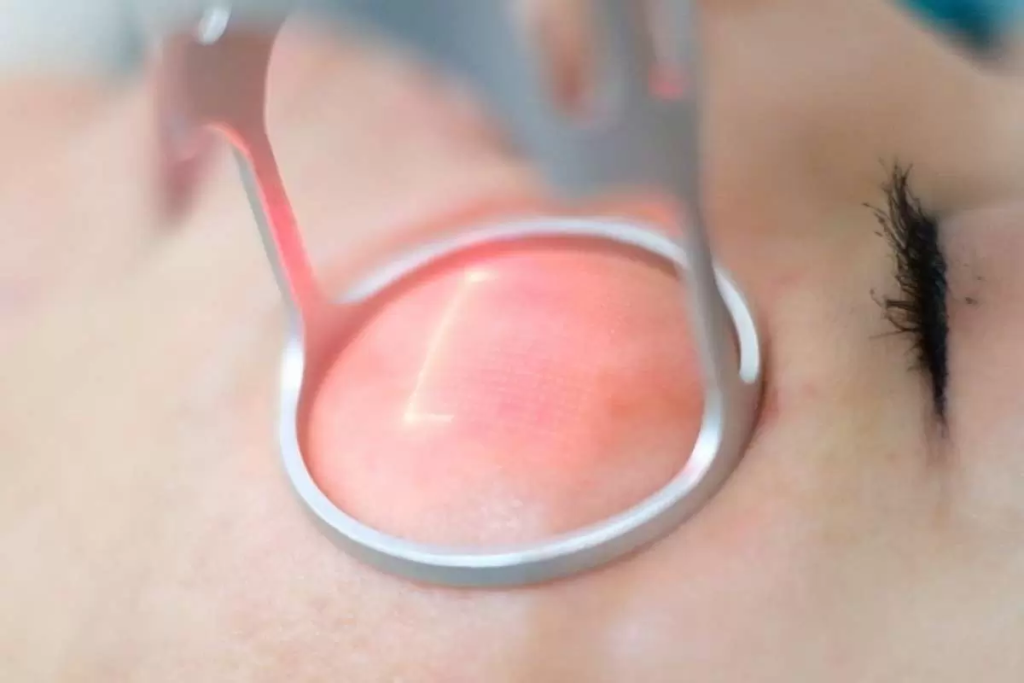If you’re feeling overwhelmed by all the cosmetic skin treatments out there, you’re not alone. With so many options promising to tackle everything from wrinkles to scars, it can be tough to know where to start. Let’s break down some popular treatments in simple terms to help you find the right one for your needs.
Key Takeaways
Dermabrasion, microdermabrasion, laser resurfacing, dermal fillers, Botox injections, and chemical peels are all designed to enhance skin texture, address aging concerns, and help you achieve a more youthful, radiant complexion.
1. Dermabrasion
Dermabrasion is a powerful skin resurfacing treatment performed by skilled dermatologists. It involves carefully removing the outer layers of the skin to improve the appearance of acne scars, sunspots, and other surface imperfections. This treatment not only reduces visible flaws but also stimulates the skin’s natural healing process, resulting in a noticeably smoother and more resilient complexion.
Why It’s Good: Dermabrasion helps your skin renew itself, revealing a fresher, more even-toned layer. It’s a great option if you’re looking for a significant improvement in your skin’s texture and overall appearance.
2. Microdermabrasion
Microdermabrasion is like a gentler version of dermabrasion. It uses fine crystals to exfoliate the skin’s surface, removing dead cells without the need for downtime. This non-invasive procedure is perfect for those with busy lifestyles who want quick cosmetic improvements. It also boosts circulation, giving your skin a healthy glow.
Why It’s Good: Microdermabrasion is fantastic for enhancing your skin tone and complexion without the intensity of more invasive treatments. It’s a quick, painless way to achieve a radiant glow and helps your skin absorb skincare products more effectively.

3. Laser Resurfacing
Laser resurfacing uses targeted beams of light to remove damaged skin layers, stimulating collagen production and improving skin elasticity. This precise treatment is ideal for addressing fine lines, wrinkles, scars, and hyperpigmentation without affecting the surrounding healthy skin.
Why It’s Good: Laser resurfacing is excellent for improving fine lines, wrinkles, and overall skin texture. It promotes new skin cell growth, offering dramatic improvements that can last for years.
4. Dermal Fillers
As we age, our skin loses volume, leading to wrinkles and sagging. Dermal fillers are injectable treatments that restore this lost volume, filling in wrinkles and enhancing facial contours. They’re made from substances that mimic natural compounds in the body, minimizing the risk of adverse reactions.
Why It’s Good: Fillers provide immediate results, smoothing out wrinkles and restoring a youthful plumpness to your skin. They’re versatile, can target specific areas, and boost self-confidence by delivering a refreshed look without surgery.
5. Botox Injections
Botox is well-known for its ability to smooth out wrinkles by temporarily paralyzing the muscles that cause them. This quick, non-invasive procedure doesn’t require anesthesia and is also used to treat conditions like excessive sweating and migraines.
Why It’s Good: Botox effectively relaxes facial muscles, reducing the appearance of wrinkles, especially around the forehead and eyes. The results last 3 to 6 months, offering a non-surgical solution for a more youthful look.

6. Chemical Peels
Chemical peels involve applying a chemical solution to the skin, causing the top layers to peel off and revealing fresher, less damaged skin underneath. This treatment is customizable, allowing for different peel depths based on your skin type and goals.
Why It’s Good: Chemical peels are highly effective for treating sunspots, acne scars, and wrinkles. They can be tailored to your needs, offering significant improvements in skin texture and tone for a more youthful appearance.
FAQs
How long do the results of cosmetic skin treatments last? The duration of results varies by treatment. For example, dermal fillers can last 6 to 18 months, while Botox effects typically last 3 to 6 months. Treatments like laser resurfacing and dermabrasion offer more long-term improvements, especially with proper skincare.
Are cosmetic skin treatments painful? Pain levels vary depending on the treatment and the individual. Botox and microdermabrasion are generally low in discomfort, while deeper chemical peels and laser resurfacing may require numbing creams or local anesthesia to minimize pain.
Can cosmetic skin treatments help with acne? Yes, certain treatments like chemical peels and laser resurfacing can effectively treat acne scars and, in some cases, active acne by reducing oil production and clearing pores. A dermatologist can recommend the best approach for acne-related concerns.
Can I return to work immediately after a cosmetic skin treatment? It depends on the treatment. Non-invasive options like Botox and microdermabrasion usually require no downtime, allowing you to return to daily activities right away. However, more invasive procedures like dermabrasion or deep chemical peels may require some recovery time.
How do I know which cosmetic skin treatment is right for me? Consulting with a qualified dermatologist or cosmetic practitioner is the best way to determine the right treatment. They can assess your skin type, concerns, and goals to recommend the most suitable option for you.
Are there any long-term side effects associated with these treatments? While most cosmetic skin treatments are safe when performed by qualified professionals, potential long-term side effects can include changes in skin pigmentation, scarring, or, in rare cases, infection. It’s important to discuss any risks with your provider before undergoing treatment.
Summary
And there you have it—a straightforward guide to some popular cosmetic skin treatments. Deciding to try one is a personal choice, and finding the right fit can make all the difference. If you’re considering taking the plunge, a consultation with a dermatologist can help guide you in the right direction.






